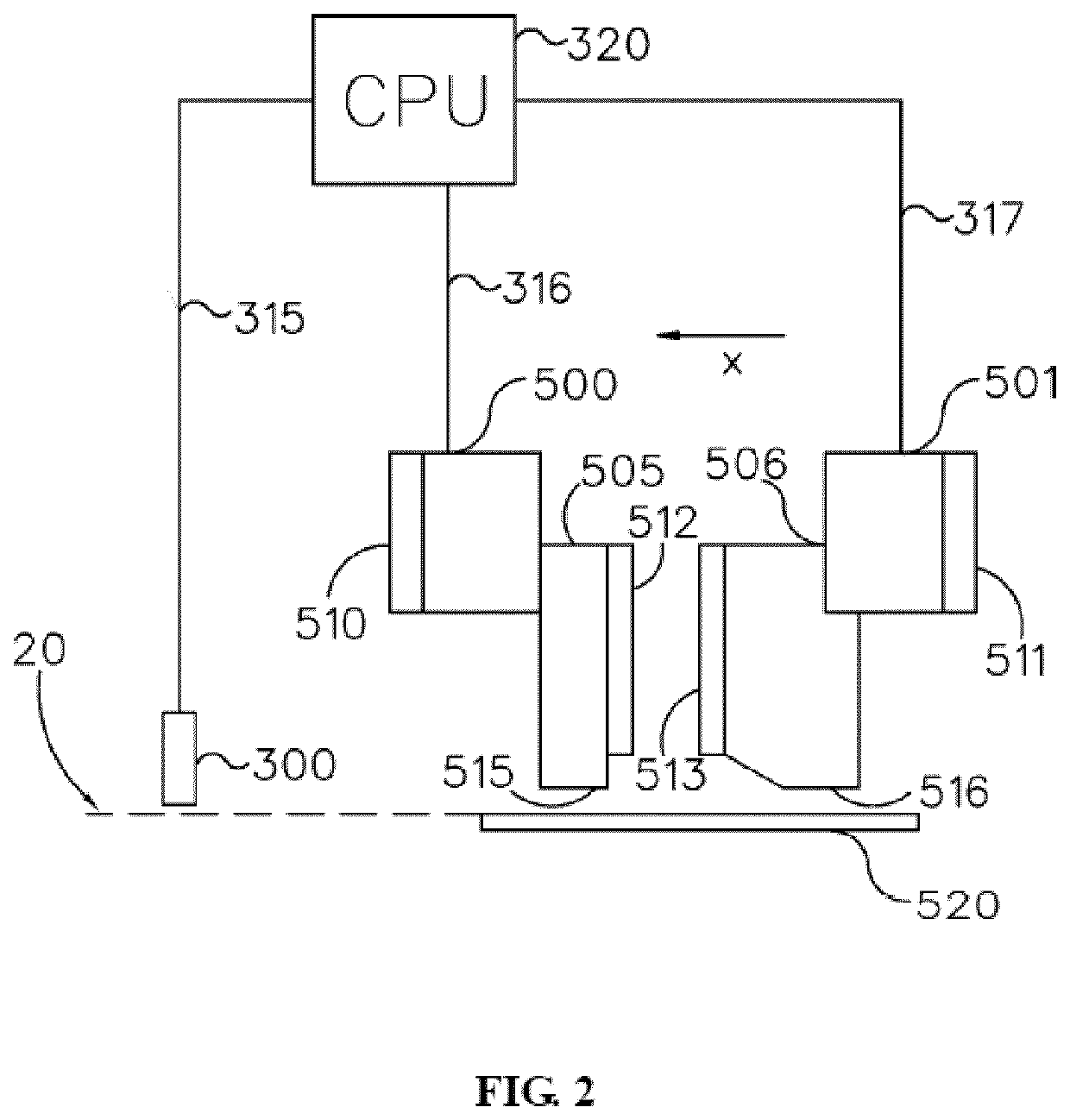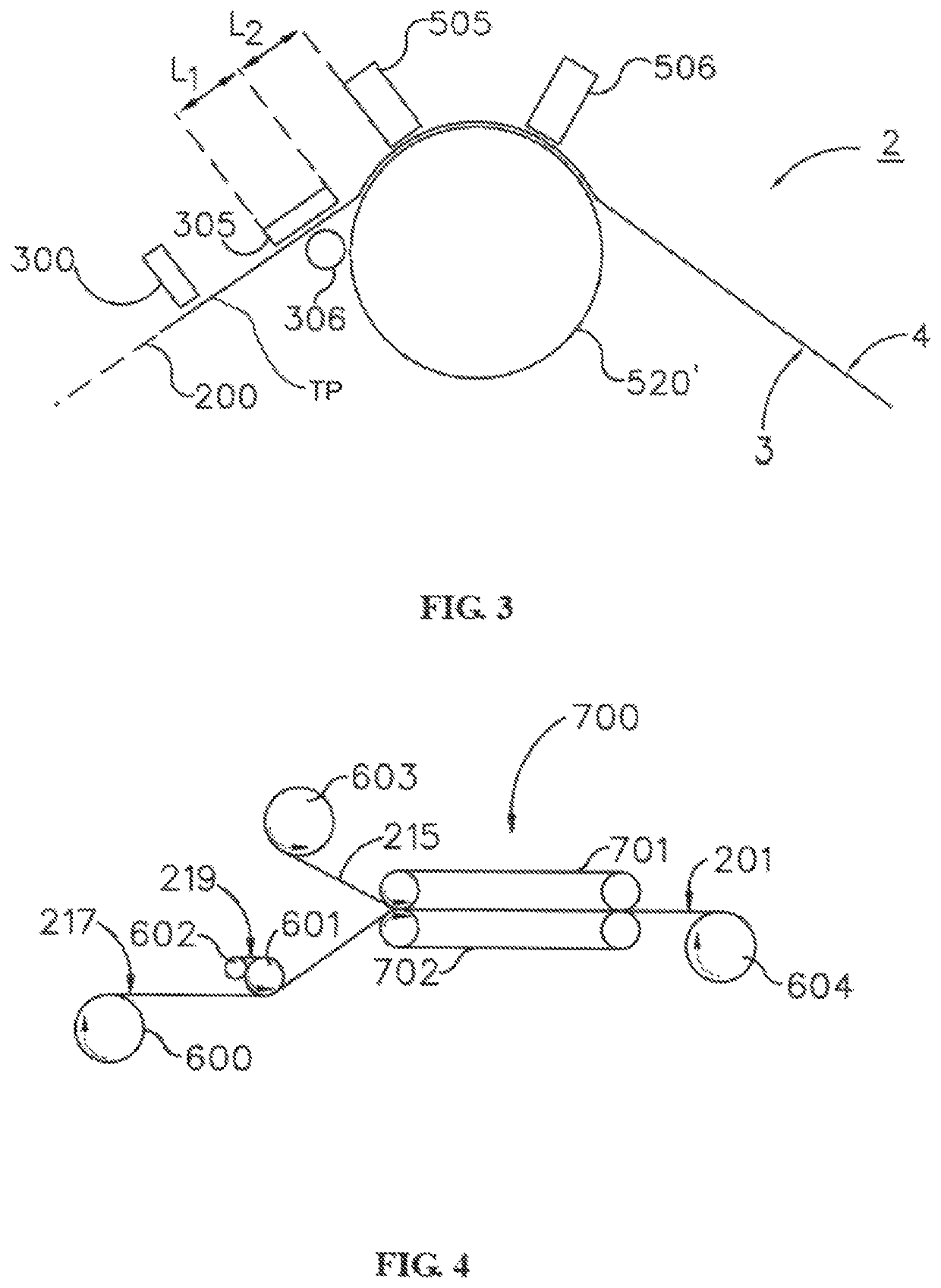Method to manufacture a textile product, a use thereof and a device for applying the method
a textile product and manufacturing method technology, applied in the direction of coatings, other domestic articles, knocking, etc., can solve the problems that the presently known methods cannot take all this into account and cannot be kep
- Summary
- Abstract
- Description
- Claims
- Application Information
AI Technical Summary
Benefits of technology
Problems solved by technology
Method used
Image
Examples
example 1
[0047]In this example a method of measuring surface roughness is described. Three textile products were made using the method as described in the GENERAL FIELD OF THE INVENTION section, i.e. a method wherein polymer yarns are stitched through a sheet to form the pile on a surface of this sheet and loops of the yarns at the back surface of this sheet, whereafter the sheet is heat treated to at least partly melt the loops of the yarns (cf. the method as outlined with respect to FIG. 3). For this test, the three products each underwent a different heating process, i.e. the melting and spreading process was done differently to arrive at three products with different durability properties, ranging from “good”, to “middle” and “bad”. It was established whether this difference in properties could be captured in or more surface roughness indicators. For this, the surface roughness of each of the products (after cooling down to below the melting temperature of the yarns) was measured using a...
PUM
| Property | Measurement | Unit |
|---|---|---|
| Tg | aaaaa | aaaaa |
| Tm | aaaaa | aaaaa |
| relative speed | aaaaa | aaaaa |
Abstract
Description
Claims
Application Information
 Login to View More
Login to View More - R&D
- Intellectual Property
- Life Sciences
- Materials
- Tech Scout
- Unparalleled Data Quality
- Higher Quality Content
- 60% Fewer Hallucinations
Browse by: Latest US Patents, China's latest patents, Technical Efficacy Thesaurus, Application Domain, Technology Topic, Popular Technical Reports.
© 2025 PatSnap. All rights reserved.Legal|Privacy policy|Modern Slavery Act Transparency Statement|Sitemap|About US| Contact US: help@patsnap.com



